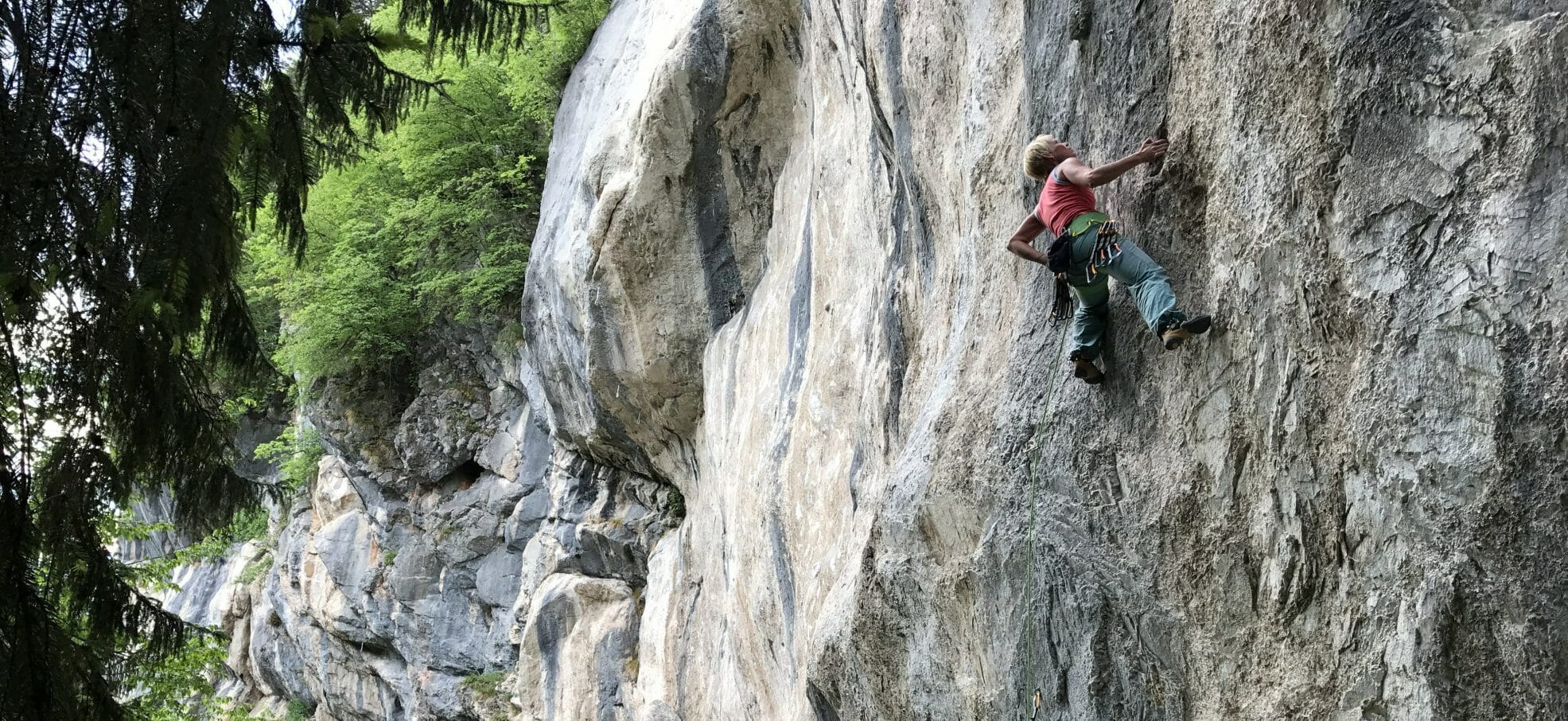Climbing onsight, meaning leading a pitch or route with no prior knowledge of the details about protection or movements, is de rigueur in alpinism, where you start at the bottom of the mountain and climb to the top and, typically, descend another way. So if you want to climb difficult alpine rock routes, you’d better be good at climbing onsight. Here I provide some onsight climbing tips that will help you hone this essential skill.
Adding an intelligently built training plan that includes tools like ARCing, Climbing Marathons, and power and power-endurance training techniques is the best way to progress your onsight climbing overall. Working a project is another great tool for raising your capacity. It doesn’t matter whether your project is 5.10b or 5.13b, we can all benefit from adopting a project at the right time within our climbing training. Once you are used to 5.13 grips, 5.11 holds feel like rests, and the movements very controlled.
Tips for Climbing Onsight
Here I want to focus on tips for climbing onsight, on lead and close to your abilities.
When climbing, break the route into sections between rests.
This allows you to notch small successes and keep you focused on the task immediately at hand.
Mentally sort the sections into easy and hard parts.
This lets you relax a bit more during the easy parts, and bear down when you need to.
Place good gear.
If your gear is suspect, you’ll know it and this will be a distraction.
Spend time on the hard sections.
Here you will want to stop at the best rest available, analyze the handholds, look for footholds, and visualize possible climbing sequences and protection opportunities.
Plan your pacing.
Think about where you will need to climb fast, and where you can climb slowly. This is something I often do wrong: I climb too slowly through the crux because I want to feel very in control during hard climbing, but this costs me a lot of extra energy.
Identify downclimbing points.
Downclimbing to a good rest is almost never a bad choice. Each time you go up and down the moves will be more familiar.
Ration your effort throughout the climb.
Save energy for the end.
Learn how to breathe.
Depending on the position, I often can’t breathe well from my upper chest due to the fact that those muscles are active and tense. I try to push my belly out and draw a big (often noisy) breath.
Learn to calm your mind before and after difficult sections.
This is key. Take some breaths, maybe even count out 10 breaths with the goal to clear your mind. Then bring your attention back to the climbing and start methodically solving the problem in front of you by identifying holds, rests, and gear placements and visualizing moves.
Approach with a “cautious optimism” mindset.
Be confident that the route is possible and that solutions will present themselves. But expect a fight.
Don’t overanalyze the moves.
Your body knows how to climb. At some point you have to trust that you know how to move, how to flow, and how to climb well, even when the route is right at your limit.
-by Steve House

